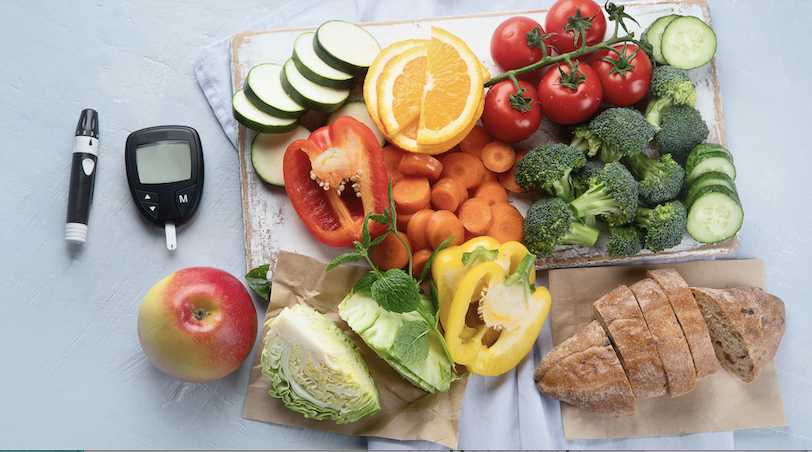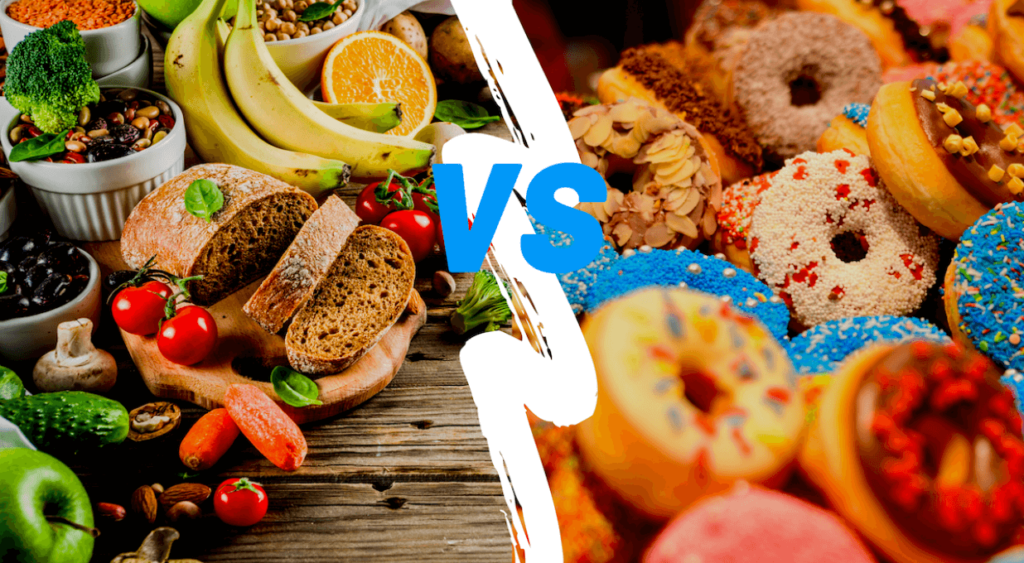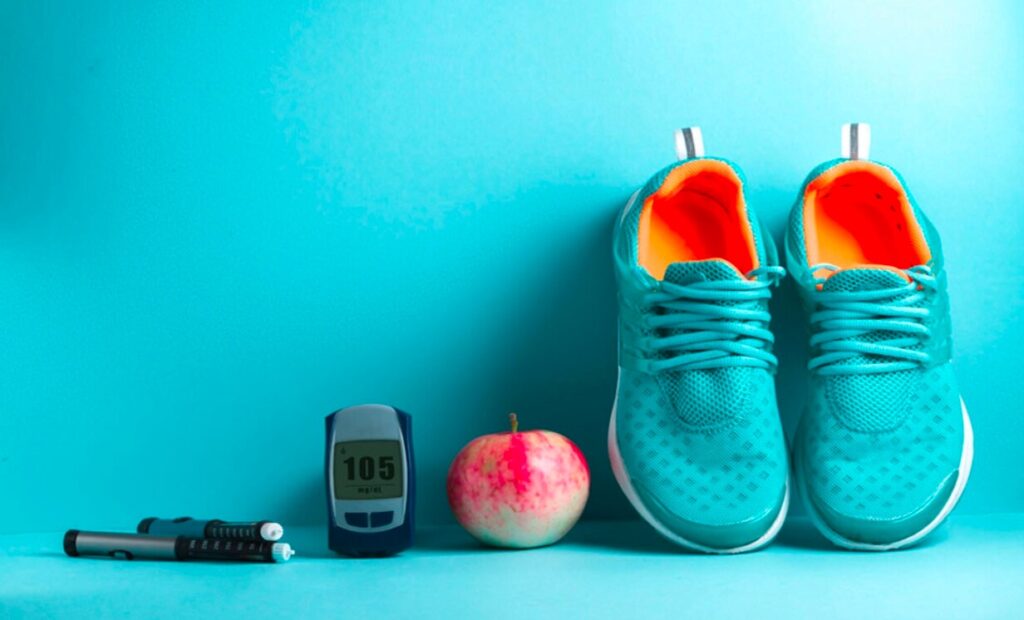
A Look Into Healthy Carbs for Diabetes: What You Should Know
Carbohydrates are generally considered “bad” food for people with diabetes and are usually associated with one of the major causes of spikes in blood sugar levels — glucose. Your medical doctor would have also emphasized the need for you to reduce carb intake because of its dangers to blood sugar and entire health.
While the talk about carbohydrate intake and its adverse effects on blood sugar and diabetes is valid, the truth is that not all carbs pose such a risk to diabetics’ health. In fact, some carbs do the opposite and aid blood sugar control. The goal is to find a balance and the right carbs to eat.
Did we just say right carbs for diabetes? Yes, you read right! This article examines the different categories of carbs that are safe for diabetics and answers questions like, “how many carbs should a diabetic have a day?”
What Are the Experts Saying?
While this article outlines the differences between healthy and not-so-friendly carbs for people with diabetes, this section focuses on experts’ stance on carbs and diabetes.
Top-rated diabetes educator, Meredith Nguyen, throws weight in support of carbs as an essential part of a diabetic’s diet and isn’t a food source to completely cut off for the general long-term safety of people with the condition. The Dallas-based expert states that carbs aren’t exactly diabetics’ enemy.
She stated that while people usually think of carbs as only sugar and starch, it’s only the half-truth as carbs also contain fiber, which is very valuable for people with diabetes. She acknowledges that fiber is a significant component of many healthy foods that diabetics eat as it controls blog sugar spikes and dips.
Erin Palinski-Wade, the author of the 2-Day Diabetes book, also talked about the importance of fiber as a vital part of a complete diabetes diet and shouldn’t be necessarily cut off.
According to him,
“Carbohydrates provide energy to your body. But not all carbohydrates are created equal. For people with diabetes, choosing whole, unprocessed carbohydrates over refined options and simple sugars is key.”
He continued that fiber-giving carbs help reduce heart disease and cancer risks and also promote a healthy body weight.
The Difference Between Good and Bad Carbohydrates

Source: Fabulous Body
For people with diabetes, carbohydrates can be categorized into three groups. These three groups are then divided into good carbs and bad carbs in the context of their health benefits for people with diabetes.
The three groups that carbohydrates fall into are:
- Sugar
- Starch
- Fiber
The sugary crabs are generated from lactose-containing dairy foods, sweet treats like chocolate, sweets, candies, soft drinks, and desserts.
On the other hand, starchy carbs include major meals like white bread, starchy vegetables, pasta, rice, yams, sweet potatoes, plantains, couscous, and breakfast cereals.
Fiber is the other carb and is found in foods like oats and barley peanuts, pulses, brown rice, potatoes, and wholemeal bread.
Bad Carbs
The three types of carbs are prevalent in general food choices. However, starchy and sugary carbs are considered unhealthy or bad for people with diabetes because they increase blood glucose levels.
Starchy food such as white bread has an extremely high glycemic index and glycemic load and is easily broken down by the digestive system and converted into blood glucose. The ease with which the body breaks down this starchy food eventually leads to excessively high glucose in the blood, increasing overall blood sugar level.
While people without diabetes have enough insulin sensitivity to control spikes eventually, people with diabetes find it difficult to replicate the same insulin production, predisposing them to further complications.
The effects of sugary carbs on blood glucose are the same as those of starchy foods. In essence, people with diabetes will have similar blood sugar spikes as with starchy foods. Moreover, sugary carbs usually contain added sugar which is not the best for people with diabetes.
Good Carbs
Fiber is a good carb and is highly recommended by the American Diabetes Association (ADA) as a healthy diet for people with diabetes. Fibers do not only serve as food; they also act as a digestive system cleanser.
They have an extremely low glycemic index and can’t be digested by the body and converted into glucose. Instead, they form a thick liquid that naturally cleanses the body of other food sources that increase blood sugar and take them out with them.
Fiber also helps a person feel full quicker than any type of crabs or food. This ensures you eat less than you would have with other meals.
In addition, fiber carbs reduce cholesterol in the body and aid digestion generally. However, the most notable benefit of carbs is that it controls blood sugar. Namely, it ensures zero/minimal sudden spikes and dips in blood sugar levels, especially after medications or meal consumption.
What’s the Right Amount of Carbs for a Diabetic?

Source: Martha McKittrick Nutrition
One of the most important questions that people with diabetes often ask relates to determining the right amount of carbs per serving. This question is valid as cutting off carbs from your meal can be highly challenging.
Suppose you’ve ever wondered, “how many carbs should a diabetic have a day?” or pondered on the question, “how many carbs per meal for a diabetic?” In that case, this section should address your current concerns.
Since carb raises blood sugar levels, it’s only logical to include only a minimal proportion of these food sources in your diet. Experts and medical institutions generally recommend low-carb diets with fiber as the best carbs to go for due to their effectiveness in regulating blood pressure and aiding weight loss.
A 2018 article published in The BMJ recommended that people with diabetes go for carb diets that are majorly fiber-filled. Suggested foods include vegetables, whole grains, fruits, nuts, legumes, and dairy.
These foods were considered as the major inclusion of a diabetes management diet. However, there are limits to how many carbs a diabetic should have for a day, fiber inclusive.
The recommended carb amount for each person is unique as certain factors play a role and determine how well every person reacts to the condition. When it comes to the question of, “how many carbs should a diabetic have in a day, week or month?” certain factors determine this, including:
- Sex
- Age
- Body Size
- Level of Exercising
Fiber is undoubtedly the primary carb diet to include in your meal if you have diabetes, as it enhances the body’s overall operation and controls blood sugar. According to the Dietary Guidelines for Americans (DGA), the recommended amount of fiber per 1,000 calories is 14 grams at the minimum.
The good thing about the DGA recommendation is that it’s easy to sustain, and the majority of the calories are from fiber. You could ensure that the other comes from fats and protein. Overall, your aim should be to cut off bad carbs as much as possible.
According to the American Diabetes Association (ADA), anyone looking to migrate to a low-carb diet by integrating fiber into their meal plan should start little and not rush it. This argument particularly holds water for those that undergo a new and deliberate fiber inclusion in meals.
The gradual addition of fiber in meals helps the body appropriately adjust to the change in diet. On the other hand, a sudden increase of fiber in meals will lead to too much gas in your digestive system, cause bloating and even trigger constipation.
The diabetes health institution, ADA, also suggests increasing water intake when upping fiber in meals. Notably, water helps fiber move through the body, so you’ll need lots of it to aid the process and reduce the effect of bloating.
The suggested fiber sources by the ADA are:
Pulses
Pulses are common foods and include peas and lentils, think navy beans, split peas, small white beans, chickpeas, and pinto beans.
Fruits and Vegetables
Fruits and vegetables are also suggested additions by the ADA, with those having edible skins (apples, pears, e.t.c) being the main focus. Fresh fruits with edible seeds like berries are also recommended as they have natural sugar and can substitute for the need to consume sweet foods.
Most vegetables are excellent fiber sources, and you should have no problem eating them and making them a part of your diet.
Nuts
The ADA suggests all edible nuts as healthy fibers. These include almonds, pumpkin seeds, sunflower seeds, peanuts, and pistachios. Some of these nuts are also healthy fats, so there should be discretion in servings to avoid excessive calorie stacking.
Whole Grains
Whole grains are high in fiber and great for people with diabetes. The ADA outlines several grains that you can go for as a diabetic, including quinoa, bulgur, barley, brown rice, oats, farro, whole wheat pasta, whole wheat, and wheat bran.
The best carbs for healthy eating should have up to 5 grams of fiber, while excellent alternatives should have up to 2.5 grams per serving. However, there’s no one-size-fits-all amount of the best low-fat diet carbs per day for a diabetic.
You’ll need to meet your doctor to help you craft a good plan for the best amount of fiber to go for. However, one thing that you should be sure of is that the fewer the carbs in your meal, especially bad carbs, the lesser your chances of having high blood sugar.
Other Important Inclusions to Control Blood Sugar

Source: YouMatter
We’ve discussed the major fiber foods in the above sections. This section will consider other essential areas that complement a diet plan centered around fiber foods with fewer calories and a low carb count.
To meet up with your blood sugar goals, other vital factors that you should consider include:
Exercise
You should take exercise as a crucial part of your health and lifestyle. For one, exercise plays a significant role in blood sugar control, and incorporating it into your diet will help you become less dependent on diabetes medications.
There are different types of exercise you can go for, and choosing the intensity that your body can tolerate is essential. Notably, this may determine your ability to sustain physical fitness for the long term. You can start with moderate exercising and, as you continue, incorporate more intense routines.
Adequate Rest
As a person managing diabetes, you can never go wrong with having a good rest; this underscores why you must ensure you rest properly. Don’t stay awake when you should be sleeping to avoid getting stressed and an increased risk of unnecessary blood sugar spikes.
Intermittent Fast
A fiber carb diet, coupled with proper intermittent fasting, can translate into impressive results. Choosing a great window that ensures you eat early enough so that your body can use the food as fuel before you go to bed is key. Moreover, pairing a fiber diet with intermittent fasting will help you become less dependent on diabetes medication and allow you to live a normal life.
Conclusion
Fiber carbs are excellent food options and can complement other diabetic management plans. Still, incorporating healthy carbs for diabetes into your diet must be done with the recommendation of medical personnel. Your doctor is in the best position to make correct decisions on how best to replace unhealthy carbs and some fatty foods with fiber to prevent your body from reacting poorly.
People with diabetes who depend on diabetes medications and insulin doses can also incorporate more fiber carbs into their meals. They will, however, need their doctor for suggestions on how to “gradually” replace their former unhealthy diets with more fiber carbs.
Finally, you can never go wrong with our diabetes management meal app, Klinio, when it comes to planning how much diet and overall calories you consume daily, weekly, or monthly. Remarkably, diabetes meal apps have continued to grow in importance over the years and are incredibly reliable to help people with diabetes make better food choices.







